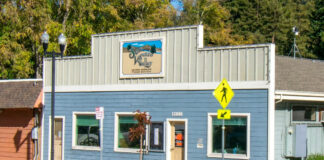As a small child and living with my elderly uncle and aunt, I gave little thought to my absent father until it was time...
Growing up in the 1940s, every household in my family included a chicken coop in the backyard. And when families came together for holidays...
“If the first thing you do in the morning is eat a live frog, you can go through the rest of the day knowing...
The Scotts Valley Farmers’ Market welcomes everyone to the launch of the 2023 season on Saturday, May 6. Join us for a second year...
Having been raised by my elderly aunt who ran a boarding house for the workers at the nearby sawmill in the small town of...
If you have never buried your face in a pillowcase or pulled sheets over your head at night that have been drying in the...
To appease clientele dining in a restaurant while waiting for their food to be served, a basket of bread or rolls along with a...
It was cold and raining (when hasn’t it been?) as I stepped from my warm car in front of Stagnaro’s Fish Market on the...
San Lorenzo Valley residents, rejoice! Our taste buds have been invited to dance with two new restaurants: Aroma in Ben Lomond and The Grove...
The Irish believe the Celtic cross represents the human desire to discover and experience the mystery of life. This cross symbolizes it as a...

















